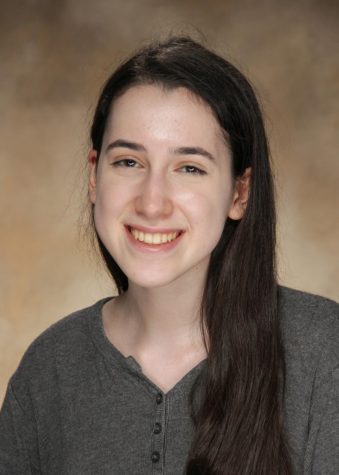Subject to change: The long process behind making CESJDS student and faculty schedules
Two months into each school year, while students are still adjusting to a new set of teachers, textbooks and assignments, the administration begins building next year’s schedule.
Every November, teachers and administration start discussing what courses they will offer and whether there should be any changes made to the schedule. These can include classes to add or to retire, either for capacity reasons or if a teacher is leaving. Then, in December or January, the administration will create a course tally form for students to show their interest in courses.
According to CESJDS database manager Lamont Segears, the tally “gives a good indication of how popular the class will be with students” and helps the administration determine the number of sections of each class to offer.
“It is by no means written in stone, and things shift dramatically between that and registration,” Dean of Academics Aileen Goldstein said.
Around February, the administration will then finalize what the offerings are. Goldstein said that deciding which courses to offer must balance student interest and choice with teacher abilities.
“Our teachers are fabulous and are capable of doing amazing things in the classroom, but they can only do amazing things if it’s within reason,” Goldstein said. [The process of picking what class options work best is] like a science and an art all at once; it’s a dance you do.”
In the winter, students will be called into grade-wide meetings and given at-a-glance sheets or worksheets to showcase the classes that will be offered the following year while reminding them of their requirements. This way, Goldstein said students can make informed layouts of their ideal schedules.
The next step is level placement, which for incoming sophomores, juniors and seniors will be sent out in March. Incoming freshmen receive their placements in May, in order to see a more complete scope of their year’s development.
Once students have formed their ideas about the classes they would like to take, they meet with their guidance or college counselor and finally submit their registration. When students return from spring break, Goldstein and other administrators will look at the actual numbers of registration and determine how many sections of each course there be necessary.
After a more concrete course list is created, department chairs “figure out who they’d like to teach the class in an ideal world, and who their second choice would be,” Goldstein said.
Teacher requests have to take into account their workload and number of responsibilities. When the middle school and the high school were combined, there was more flexibility with the schedule because teachers were working across divisions. Now, in most departments, there are only four teachers, which makes accommodating teacher capacity more of a concern and an increasingly difficult task.
Segears inputs the course offerings into PowerScheduler, which is part of the administrator portal of PowerSchool. Segears will give higher priority to graduation requirements, and then “work around the courses that aren’t required for graduation later on down the line,” he said.
The preference form for each class includes information on how many credits the course is, what department offers it, the target number of sections and what periods it can fall in. Segears said that Judaics classes and classes that only have one section tend to drive the schedule because they are most difficult to arrange.
According to Segears, in the “build” section, the computer puts the classes together and creates an initial schedule, a kind of board with teachers listed horizontally and periods listed vertically. The “load” section places students into the schedule.
Afterward, administrators edit students’ schedules depending on intricacies such as Judaic requirements specific to grade level. The first part of the schedule checked are the requirements, followed by Judaics classes and lastly by electives.
Factors considered other than requirements, student choice and teacher capacity include balanced classes. If there are six students in one section of a course and twenty in the other, the administration will try to manipulate that manually to get a more even distribution. The administration will also consider the male-female ratio of classes if possible.
Fall semester seniors get priority in choosing their Judaic and elective classes, according to Goldstein, because the younger students will have more opportunities to take them. On the other hand, classes such as Journalism I, Kinesiology and Athletic Training tend to be underclassmen-dominated, so they work better with their schedules. Most of the time, though, priorities are fluid.
While the administration will work hard for students’ first choices, sometimes it is impossible to fit that in with the schedule. If a students’ core class conflicts with the only period of their first choice elective, the student will have to take their alternate.
“The reason why we ask students to choose alternates and be thoughtful about choosing alternates is that there’s no guarantee that you’re going to be able to get the exact course that you want,” Segears said. “With your core courses, yes, we’re going to make sure you get those, but there’s no guarantee with those other courses, and so we need alternates in order to be able to build a schedule where you’ll have a course each and every period.”
Editing
The schedule is fixed and rerun many times, moving classes around and seeing how students are affected by the change. Each time the schedule loads, the program calculates how many students schedules are a success, meaning that they have all their classes.
This manipulation is done mostly by Segears and Head of College Counseling Sue Rexford. Once they are comfortable with the schedule, they turn the schedule back to the department chairs. Department chairs can change the teachers for specific classes, but not teacher load or where each class falls in the schedule.
When the schedule is finalized depends on the year, but is overall a long process. To make the manipulation easier, the administration tries to account for where student changes are most likely and lay out the initial schedule accordingly. Goldstein said it is common for students to adjust their math or Hebrew levels, but uncommon to change around a Spanish level.
“If we can offer pre-calc accelerated and pre-calc advanced in the same period, we will,” Goldstein said. “We try to anticipate that and build it in so it doesn’t have the domino effect [on the rest of the schedule].”
Seagers believes one of the most significant challenges with the high school schedule is the amount of choice. In comparison to choosing levels in many classes and having the option to double in a subject, in the middle school schedule, Goldstein said there are fewer leveled classes and fewer elective choices. There can be periods for “science” or “English,” which are significantly easier to work around.
To best accommodate student choice, schedules are reviewed at least once by a counselor. Guidance counselor Rachel Soifer said that their first job is to double check for requirements and then to make sure everyone has at least one of his or her first-choice electives.
Since Soifer meets with her students before registration, she has a good sense of their course load preferences and what their priorities and goals are.
“When I’m looking at their schedule, I generally have a sense of what’s most important to them and what has a little bit of give,” Soifer said.
If a student is especially interested in one elective, Soifer might make sure they have that course, even if that means they do not have their other three first-choice electives. For another student, though, three preferable electives and one okay elective is a better option than one that they love.
Soifer sees student choice as a priority and will reach out to students over the summer if there are extenuating circumstances and their schedule cannot work in a way they like.
“I don’t think students realize it when it comes to not being able to get something that they want how many hours everyone puts into everything,” Soifer said. “For example, if I have a student who I know really wants a particular course, and that course is offered a period where they can’t take it, I might go through, there might be, say, twelve or fifteen kids in it, and might go through all fifteen kids to see if I can move them out to a different period to see if it can work for that one student.”
Feedback
Despite the effort given to following student choice, there are some students, such as senior Liam Shemesh, who did not receive their optimal schedules. Shemesh, along with many other students, found his schedule earlier than the first day of school by manipulating the link on the student view of the PowerSchool website.
He had previously had many meetings with his guidance counselor, college counselor and the school administration in order not to take a science class senior year, as he had fulfilled his science requirement for the state by taking two sciences in tenth grade. Although PowerSchool required him to submit a science elective, his guidance counselor worked with him to make sure that he would not take a science. His schedule, however, showed he was enrolled in Genetics and Biotechnology.
“Everyone had the understanding that I did not have to take a science, and I’m still being given a science, which is more meetings for me that I have to go through on the first few days to get out of taking a science, and that’s just really frustrating because it’s also really inconvenient for the teacher because now I’m going to roll up the first day of school to her class that I’m not taking,” Shemesh said.
Because Shemesh found out his schedule through the PowerSchool leak, which has since been shut down, and not through a more official source, he does not plan to take action until the first day of school. Shemesh said he understands why schedules are withheld until the first day of school, because of all the changes that students would want to make, but said it is frustrating to not be able to resolve the problem yet.
In general, Shemesh also feels that it is important for students to know their schedules and the courses that they are taking in advance of arriving on Aug. 28.
“I think it’s nice to be prepared. If you know what you have ahead of time, you know what to get. At this point in time in high school, the supply list that JDS sends out doesn’t help me at all. It’s all about what individual teachers I have and what individual classes I have because by now I’ve had most of the teachers, and I understand what they need, and I understand what I need for their classes, but now you can’t really do any of that,” Shemesh said. “If you didn’t see your schedule ahead of time, you can’t really deal with any of that, and now after the first day of school you have to go school shopping which is ridiculous.”
According to Segears, although scheduling difficulties may happen, when the schedule is finalized a majority of students will have many of their top choices. Although it would be nice to give all students their ideal schedules, due to the more substantial number of options and the small number of sections for some courses, this is not entirely possible.
“We want to offer choice; we want to make sure that choice is there, so we try to just build the optimum schedules based on what we have,” Segears said.
This story was featured in the Volume 36, Issue 1 edition of The Lion’s Tale, published on Aug. 28, 2018.












